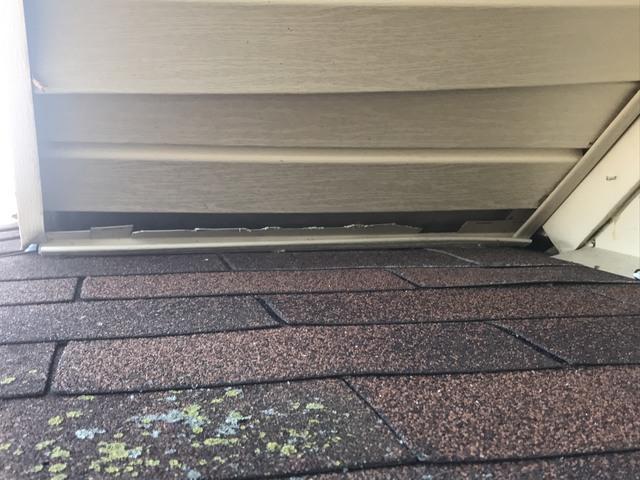Squirrels chew their way into Princeton building - Wildlife control in Princeton
Challenge
I was dispatched to a large apartment building in to resolve a squirrel infestation. Although it may seem more overwhelming to deal with a wildlife infestation in a large building compared to a residential home, the process itself is no different. However, since the building is larger, it takes more time for the inspection to locate the animal activity and find the access points so that they can be sealed.
At a broad level, especially for a wildlife technician, commercial and residential buildings are quite similar. After all, buildings are buildings. Commercial buildings have roofs, soffits, basements, attics — all of the common parts of a structure that wildlife often exploit to gain access inside. Of course, there are some major differences between the two. Compared to residences, the code requirements for commercial buildings covering handicap accessibility, emergency exits, fire safety, and other areas of concern are much more stringent. Commercial buildings require sprinklers and fireproofing while residential construction does not. Mechanical, electrical, and plumbing systems are much more complicated in commercial structures. Commercial buildings often have flat roofs compared to the pitched roofs of residences, and the different roofing materials as well. Homes usually use shingles while commercial roofs are usually metal, TPO membranes, or bitumen asphalt-type roofing.
Solution
So, even though a larger building may seem a bit more intimidating when you approach it, the initial inspection is still the same. It just takes longer and you have to be more systematic and methodical to make sure that you don’t miss anything.
Even though squirrels are arboreal and have exceptional dexterity at great heights, these rodents still can’t fly. With taller buildings, they need a way to access the roof. With this apartment building, I immediately noticed that there were two trees practically leaning on the building (see photo). This was the most obvious way for the squirrels to gain access to the roof, so I chose this part of the roof area to begin my inspection. Once on the roof, it didn't take me long to find their access point. There was a hole about 10' from the tree branch that they were using as a bridge to land on the roof. The squirrels had made semi-circular chew marks to make enough of an opening for them to fit through (see photo).
The squirrels had made a hole in a tight area of the roof where the lower roof joined with a taller roof. The intersection of the two roofs formed a sharp acute wedge-shaped angle. We informally nickname these tight pizza-slice shaped spaces “Pac-mans” because their sharp angle resembles the mouth of the yellow Pac-man character from that old 1980s arcade video game (That game where you used a joystick to maneuver the always-eating open-mouthed Pac-man through a maze to devour pac-dots while four “ghosts” are trying to catching him. And if you remember dropping in quarters to play Pac-man at your local pizzeria just to listen to its headache-inducing sound effects, you are definitely showing your age!)
Getting back to the squirrels, because of the difficult angle of these “Pac-man" roof intersections, it requires a little more ingenuity in order to place a "one way" exclusion over the access point. These wildlife exclusions permit only a one-way trip. They allow the squirrels to exit, but once out, they cannot not get back into the building (see photo). After installing the one-way, I placed three traps right next to the access, baiting them with a squirrel favorite — peanuts (see photo). After completing the set up, I carefully checked the rest of the roof to make sure that the squirrels were not using other access points. Fortunately, the squirrels already had an easy route from the tree branch to the nearby hole in the roof, so they did not bother making or looking for other points of entry.



